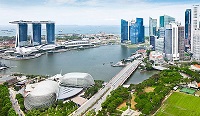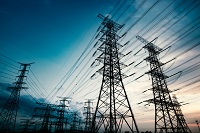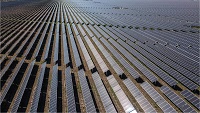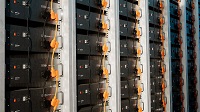* SAIDI (System Average Interruption Duration Index) measures the average interruption time per customer in minutes
^ SAIFI (System Average Interruption Frequency Index) measures the average number of interruptions per customer
Energy security is the foundation of the energy transition as we embark on our journey towards a net zero future. A stable and secure power system is necessary to be resilient against market volatility.
At a Glance: Singapore's Power Generation Statistics
In 2023, Singapore’s total electricity generation and peak demand increased by 274 GWh (or 0.5%) and 72 MW (or 0.9%) respectively as compared to 2022.
Correspondingly, the nation’s total electricity consumption also increased by 541 GWh (or 1.0%).
Singapore continues to maintain one of the most reliable power grids in the world. On average, each customer experienced an average of 0.008 interruptions lasting 0.14 minutes in 2023.
Singapore's Power Generation
- Electricity Generation
- Electricity Consumption
- Peak Demand
Singapore continues to maintain one of the most reliable power grids in the world. On average, each customer experienced an average of 0.008 interruptions lasting 0.14 minutes in 2023.
| Year | SAIDI (min)* | SAIFI^ |
|---|---|---|
| 2023 | 0.14 | 0.008 |
| 2022 | 0.16 | 0.006 |
| 2021 | 0.13 | 0.007 |
| 2020 | 0.17 | 0.006 |
| 2019 | 1.06 | 0.052 |
Securing Our Energy Supply
Ensuring a sufficient and diverse gas supply is key to a stable and secure power system.
Increasing Capacity for Liquefied Natural Gas (LNG)
To meet growing energy needs and enhance energy security, Singapore LNG Corporation Pte Ltd (SLNG) is developing options to increase throughput capacity. This will better enable Singapore’s energy demand to be met as natural gas will remain a critical fuel to support the energy transition to low-carbon alternatives.
Centralising Gas Procurement
In October 2023, the Ministry of Trade and Industry and EMA announced that the government will be establishing an entity to centralise the procurement and supply of gas for the power sector by aggregating gas demand from power generation companies.
This move will bring several benefits to Singapore, including a steadier and more secure gas supply, which will in turn bring about more stable electricity prices for consumers.
More Power Generation Capacity
With rising energy demand, EMA is ensuring sufficient power generation capacity for the future.
Award for New Generation Capacity under Centralised Process
In January 2024, EMA awarded YTL PowerSeraya the right to build, own and operate a new hydrogen-ready Combined Cycle Gas Turbine unit with a capacity of at least 600 megawatts (MW) by end of 2027. This is the first award for new generation capacity under EMA's new Centralised Process, which guides and facilitates the development of new generation capacity to meet future demand.
The framework guides private investments in hydrogen-ready and lower-carbon intensity solutions for a greener and more resilient power system.
Request for Proposal for New Generation Capacity
In June 2024, the energy industry was invited to build, own and operate two new hydrogen-ready Combined Cycle Gas Turbines of at least 600 MW each, to be ready in 2029 and 2030.
Fast Start Generation Capacity
In April 2024, EMA awarded PacificLight Power the right to build, own and operate two power generating units that will provide 100 MW of fast start generation capacity by the second quarter of 2025.
These units ensure that Singapore continues to enjoy uninterrupted power supply during contingencies and will have the potential to switch to using hydrogen instead of natural gas in the future.
Enhancing Consumer Protection
With new supply risks and volatility in the changing energy landscape, governments must review their approach to ensure energy security and stability in energy markets.
Temporary Price Cap
As part of a suite of initiatives to strengthen Singapore’s energy market during times of global market volatility, EMA introduced the Temporary Price Cap mechanism starting from 1 July 2023. This "circuit breaker" is activated only during periods of high and sustained price volatility in the Singapore Wholesale Electricity Market to mitigate extreme price fluctuations.















